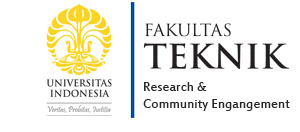| Authors | Diogo Costa, Paolo Burlando, Cindy Priadi, Liong Shie-Yui |
|---|---|
| Publication Name | Journal of Contaminant Hydrology |
| Abstract | Groundwater is extensively used in Jakarta to compensate for the limited public water supply network. Recent observations show a rise in nitrate (NO3 −) levels in the shallow aquifer, thus pointing at a potential risk for public health. The detected levels are still below national and international regulatory limits for drinking water but a strategy is necessary to contain the growing problem. We combine 3 years of available data in the Ciliwung River, the major river flowing through Jakarta, with a distributed river–aquifer interaction model to characterise the impact of urbanisation on the N-cycle of both surface and groundwater systems. Results showthat the N-cycle in the river–aquifer system is heterogeneous in space, seasonal dependent (i.e. flow regime) and strongly affected by urban pollution. Results suggest also that although the main sources of N related groundwater pollution are leaking septic tanks, the aquifer interaction with the Ciliwung River may locally have a strong effect on the concentrations. In the general context of pollution control in urban areas, this study demonstrates how advanced process-based models can be efficiently used in combination with field measurements to bring new insights into complex contamination problems. These are essential for more effective and integrated management of water quality in river–aquifer systems. |
| Publisher | Elsevier |
| ISSN | 0169-7722 |
| Page | 87-100 |
| Volume | 192 |
| Impact Factor (JCR) | 2063 |
| SJR | 993 |
| Ranking Quartile | Q1 |
| Website | http://dx.doi.org/10.1016/j.jconhyd.2016.06.004 |
The nitrogen cycle in highly urbanized tropical regions and the effect of river–aquifer interactions: The case of Jakarta and the Ciliwung River
LATEST POST
CALL FOR PROPOSAL: Penerimaan Hibah Osaka Gas Tahun 2025
6 Dosen Fakultas Teknik Universitas Indonesia Catatkan 8 Paten
Mahasiswa FTUI Kaji Potensi Hidrogen Alami di Sulawesi, Didorong Jadi Rujukan Kebijakan Nasional
Mahasiswa FTUI teliti potensi hidrogen geologis pertama di Indonesia
Dosen Fakultas Teknik UI ciptakan alat pemurnian air ramah lingkungan "Arofah"
POPULAR NEWS
LATEST VIDEOS
LOGIN






